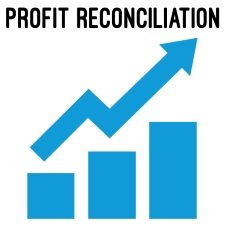6 Methods of Segregation of Semi-Variable Overhead
Table of Contents
Methods of Segregation of Semi-Variable overhead
The semi-variable overhead gives a lot of problem to management in cost analysis. The reason is that the management is not able to find any relationship between cost and volume. Hence, there is a need of segregation of semi-variable overhead into fixed and variable element. The following methods are used to segregate the semi-variable overheads.
1. Intelligent Estimate of Individual Items
Under this method, the past overhead data is used to find the relationship between cost and volume through analyzing various activity levels. Suitable adjustments are made in data for anticipated changes. By doing so, the semi-variable overhead is divided into fixed and variable. This method is very simple but not scientific. Hence, the management is not possible to take a quality decision.
2. High and Low Method
This method is otherwise called as Range Method. Under this method, two levels of expenses are taken into account. One level of expenses is high and another level of expenses is low. Besides, output of these level periods is considered. The difference in output and expenses are found out. The difference in expenses is due to variable element. Moreover, it is assumed that the fixed element of semi-variable overhead is expected to remain fixed for two periods ie two levels of expenses. In this way, both fixed and variable overheads are find out.
3. Method of Averages
Initially, averages of two selected groups are taken into consideration. Then, high and low method is followed to segregate the fixed and variable components of semi-variable overhead.
4. Analytical Method
Under this method, degree of variability is found out in percentage for each item of semi-variable overhead. The Cost Accountant has determined the percentage out of his/her experience and the past data. With this percentage information, fixed and variable components for each item of semi-variable overhead are segregated.
5. Scatter Graph Method
Under this method, output in various levels and the semi-variable overhead of corresponding levels are taken into account. A scatter graph can be drawn with the help of these data. X-axis is taken as output and Y-axis is taken as semi-variable overhead in total.
The costs at a number of levels of output are plotted on a graph. Then, a straight line is drawn between the points plotted in such a manner. The point at which the line of best fit touches the ordinate indicates fixed component of the total cost. The slope of the line indicates the degree of variability of costs.
6. Least Squares Method
This method is also called as Simple Linear Regression Analysis Method. Regression is the measure of the average relationship between two or more variables in terms of the original units of the data. Under this method, the degree of prevailing relationship between two variables is identified.
Volume of production and expenses are two variables. Electricity charges, maintenance expenses and the like are the examples of expenses. These expenses may vary with the volume of production though not in the same proportion.
To study the cause and effect relationship, volume of production is taken as independent variable and expenses is taken as dependent variable. In this analysis, independent variable by one unit leads to constant absolute change in the dependent variable.
In this way, regression line can be used to find out the values of dependent variable. The regression line is based on equation called regression equation.
The regression equation is given below.
Y = a + bx
Where,
- Y represents total cost
- a represents fixed element of total cost
- b represents variable element of total cost
- x represents number of units.

